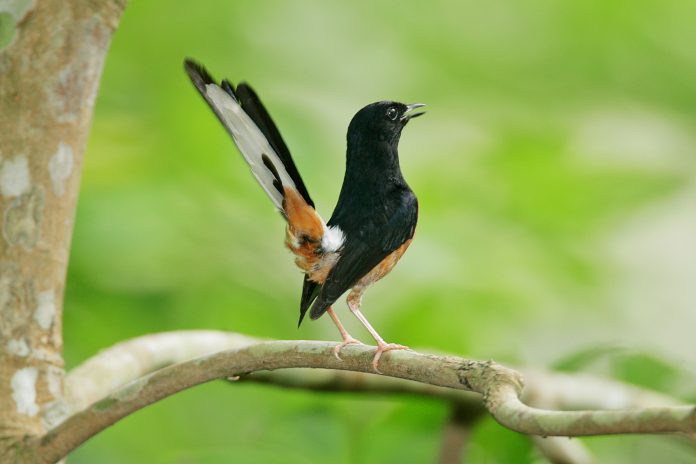Tackling the songbird crisis in Asia
“His wings are clipped and his feet are tied
So he opens his throat to sing”
– Maya Angelou, I Know Why the Caged Bird Sings (1969)
Maya Angelou’s poem may have been written as a metaphor about her freedom from prejudice and abandonment during childhood. But nothing could be further than the truth right here in Southeast Asia, where literally, songbirds are caught, caged and illegally traded, leading to the demise of many endangered species and the devastation of our natural heritage.
Familiar scenes that may float to mind include bird markets from Hong Kong to Jakarta that are popular with locals and tourists, or songbird competitions in Singapore that are a cultural past time for many senior citizens. But the truth is closer to home.

The Javan green magpie, the black-winged myna and the Bali myna – currently categorised as Critically Endangered on the International Union for Conservation of Nature (IUCN) Red List – were identified as high-priority birds at the Asian Songbird Crisis Summit held in Singapore last September.
During the three-day conference at Jurong Bird Park co-organised with TRAFFIC and Cikananga Wildlife Center, the spotlight was mainly on Indonesia, which has the highest number of bird species in Asia but also the highest number of threatened birds globally, outdoing Brazil which is a country five times its size.
Indonesia’s booming bird markets – both legal and illegal – such as the Pramuka Bird Market in Jakarta, have put an alarming 131 out of 184 species on the red alert.
“The volume of trade is so high that once common wild birds are vanishing at an alarming rate,” said Dr Chris Shepherd, Regional Director for TRAFFIC in Southeast Asia, whose aim is to monitor wildlife trade in the region to ensure their sustainability. As the famous traditional Javanese saying goes, “A man is considered to be a real man if he has a house, a wife, a horse, a keris (dagger) and a bird”. So entrenched is the culture of keeping songbirds that capturing, rearing and trading these precious birds have turned into a lucrative business.

In Indonesia, a kicau-mania can fetch owners up to 250 million rupiah (US$18,000) for a winning bird. The preference for wild-caught birds adds to the problem, where they are believed to sing better or have richer-coloured plumage and tails.
During the summit where over 35 experts gathered, a priority list of 28 songbird species from the Greater Sunda region was determined, with 12 species requiring immediate action. Dr Sonja Luz, Director of Conservation & Research at Wildlife Reserves Singapore, said: “We’re in real danger of losing once common songbirds, and it is no less of a crisis for Asia’s wildlife.”
For more stories and photos, check out Asian Geographic Issue 116.











